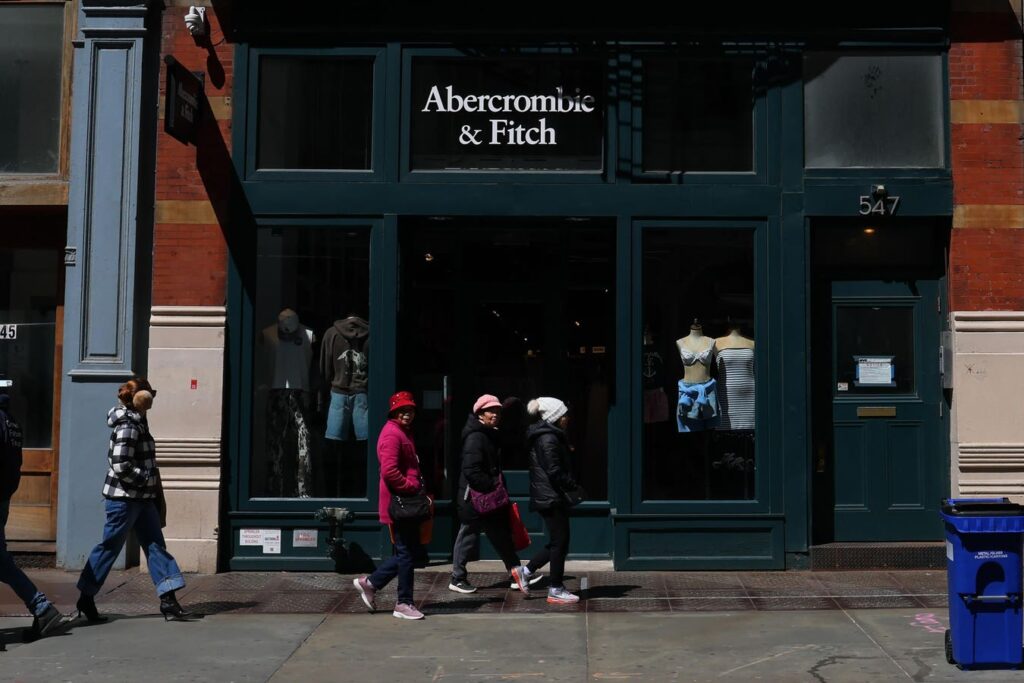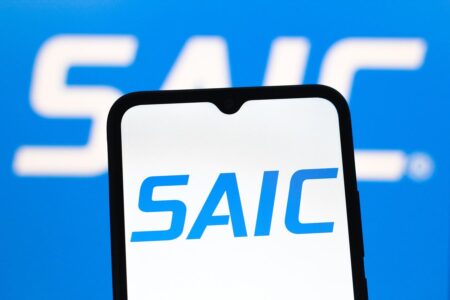Abercrombie & Fitch’s (NYSE: ANF) Q1 results surpassed expectations on May 28, resulting in a 15% increase in shares. After the market opened on May 29, the stock retreated to $83, remaining 44% below its year-to-date peak and lagging behind the S&P 500’s 0.6% increase. This discrepancy underscores the company’s robust operational performance amid macroeconomic challenges, tempered by investor apprehension regarding adjusted margin and earnings projections for FY 2025.
In the last three years, ANF stock has more than doubled—from approximately $35 in early 2022 to almost $85 today—driven by a 155% increase in earnings per share, from $4.20 in 2021 to $10.69 in 2024. This momentum continued into Q1 FY25, where the company achieved EPS of $1.59 on $1.10 billion in revenue, exceeding expectations of $1.39 and $1.07 billion, respectively. Although earnings growth has been remarkable, valuation multiples present a more conservative picture: the trailing P/E ratio rose to 11x in 2024 but has since decreased to 8x, despite improved fundamentals—reflecting investor concerns regarding sustainability and external risks.
What Drove Abercrombie & Fitch’s Earnings Growth?
The resurgence of the company’s namesake brand hasn’t happened by chance. The company has redesigned its stores, broadened its market appeal, and focused on digital and global expansion. Sales of the Abercrombie brand grew at an 18% CAGR from 2021 to 2024, outpacing the company’s overall growth of 10%. Hollister reported an 8% CAGR, boosted by Gen Z enthusiasm and a more robust women’s collection. Operating margins sharply increased from 9.2% to 15.0%, while a 15% decrease in shares outstanding contributed to a dramatic 155% jump in EPS, significantly outpacing revenue growth. See Abercrombie & Fitch’s Revenue.
Nevertheless, Q1 results presented a mixed scenario: Abercrombie brand sales fell 4%, with comparable sales down 10% due to reduced pricing and challenging year-ago comparisons. Conversely, Hollister achieved its eighth consecutive quarter of growth—sales increased by 22% with comps up 23%. The operating margin settled at 9.3%, lower than last year’s 12.7% but above expectations. Inventory value rose by 21%, positioning the company for a stronger second half.
Valuation Affected by 2025 Guidance, Tariff Risk
The full-year guidance has been adjusted, with EPS now forecasted to be between $9.50 and $10.50 (down from $10.40 to $11.40), and operating margins revised to 12.5%–13.5% (from 14%–15%). The primary factor: $50 million in tariff expenses expected to reduce margins by 100 basis points. With no plans for broad price hikes and a flat outlook for average unit retail this year, ANF anticipates 3%–6% net sales growth in 2025, with increases expected across all regions. Management is enhancing shareholder returns through a $1.3 billion stock buyback program, having repurchased $200 million in Q1 with $1.1 billion remaining authorized.
Volatile History, Undervalued Potential?
The fluctuations in ANF’s stock have been significant: +71% in 2021, -34% in 2022, +285% in 2023, and +69% in 2024. The notable decline in 2025 suggests investor skepticism amid macroeconomic risks and tariff challenges. Nonetheless, with a P/E of just 8x—well below the four-year average of 14x—and robust earnings potential, the stock may present considerable upside if management effectively addresses the headwinds. See our analysis on Abercrombie & Fitch’s Valuation for additional insights on what is influencing our price estimate for the stock.
Note: Investing in a single stock entails risks. Conversely, the Trefis High Quality (HQ) Portfolio, which includes a selection of 30 stocks, has a history of consistently outperforming the S&P 500 over the past four years. Why is that? Collectively, HQ Portfolio stocks delivered superior returns with reduced risk compared to the benchmark index, showcasing a smoother investment experience as evident in HQ Portfolio performance metrics.
It is also important to understand that stocks can plummet sharply – 20%, 30%, even 50% –as we’ve observed during previous market disruptions. No stock is exempt. Our dashboard How Low Can Stocks Go During A Market Crash shows how key stocks performed during and after the last six market crashes.
Read the full article here
















